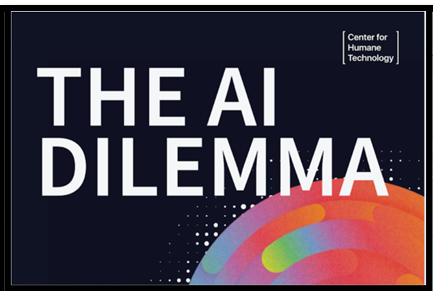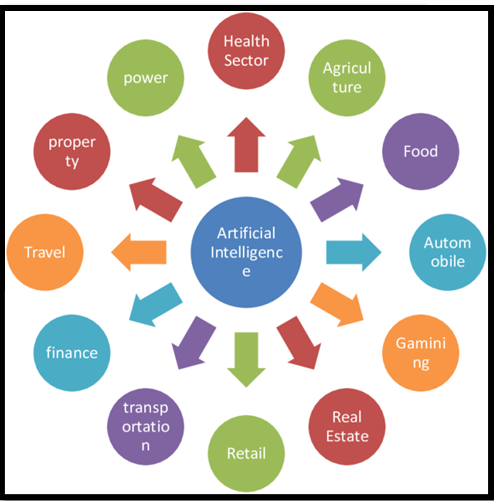INSPIRED BY HUMINT, AI NEEDS IP HANDRAILS
Relevance:
GS 3
- Science and Technology- developments and their applications and effects in everyday life.
- Awareness in the fields of IT, Space, Computers, robotics, nano-technology, bio-technology and issues relating to intellectual property rights.
Why in News:
Recently, European Parliament Crafted World’s First AI Regulation.
Source- CFHT
As the field of artificial intelligence (AI) continues to advance, it has become increasingly challenging to distinguish between content created by humans and that generated by machines. This blurring of lines raises the urgent need for well-defined intellectual property (IP) guidelines in AI to establish ownership and rights regarding AI-generated content.
Artificial Intelligence (AI) in a Nutshell
- Basic Definition: AI refers to machines displaying intelligence, essentially creating computer systems with human-like thinking abilities.
- Origin and Scope: Coined by John McCarthy in 1956 at MIT, AI simulates human intelligence processes like learning and reasoning. It now encompasses everything from robotic automation to physical robots.
- Contemporary Relevance: AI has gained immense popularity due to its broad applications, from healthcare to military devices, making it a vital technology today.
Learning from Human Intelligence Operations (Humint)
- Background of Humint: The intelligence community has a long history of dealing with intricate issues related to information ownership and sharing. Humint operations, focused on gathering intelligence through human sources, often operate within strict legal frameworks.
- Applying Humint Insights: Lessons from Humint can be applied to AI to ensure that while fostering innovation, creators and users are protected. This can include defining ownership of AI-generated content, sharing data responsibly, and preventing unauthorized use.
Pressing Needs for Regulation
- Equality in AI: Facial recognition technology shows biases, necessitating fairness in algorithms.
- Privacy Concerns: Litigation against tech giants highlights the need for stringent data protection measures.
- Security Risks: The threat of AI-powered cyberattacks prompts a demand for greater security protocols.
- The AGI Horizon: The prospect of Artificial General Intelligence demands preemptive ethical considerations.
- Moral and Social Implications: Deepfakes and misinformation campaigns represent new societal challenges.
Obstacles in Regulating AI
- Technological Pace: The swift evolution of AI technology presents a moving target for regulators.
- Economic Impact: Heightened regulatory compliance could disproportionately affect small businesses and startups.
- Legal Accountability: Determining liability for AI-induced harm remains a complex issue.
- International Consensus: Achieving a unified regulatory approach across nations is a formidable challenge.
Strategic Directions for AI Regulation
- Global Standards: Endorsement of international declarations like the Bletchley Declaration is critical.
- Regulatory Frameworks: Creation of adaptable and comprehensive regulations is essential.
- Global Partnerships: Cooperation among nations is key to harmonizing AI governance.
- Educational Investment: Prioritizing AI literacy and research will prepare societies for an AI-driven future.
- Corporate Responsibility: Promoting self-regulation within the AI industry is also vital.
Global Regulations for AI
European Union
- The EU is formulating the AI Act for comprehensive AI regulation.
- The focus areas include data quality, transparency, human oversight, and accountability.
- Ethical considerations and sector-specific challenges are addressed.
United Kingdom
- The UK promotes a light-touch regulatory approach, integrating AI within existing sector-specific regulations.
- A white paper details five principles for AI use: safety, security, transparency, fairness, and accountability.
United States
- The US has introduced a Blueprint for an AI Bill of Rights to mitigate AI-related economic and civil rights harms.
- The blueprint emphasizes five principles for harm reduction.
China
- In 2022, China implemented some of the first national regulations specific to algorithms and AI.
- The focus is on regulating recommendation algorithms and information dissemination.
India
- While India lacks specific AI laws, MeitY oversees AI regulatory development.
- Existing IT Act provisions apply to crimes involving AI.
- The 2021 IT Rules require due diligence on social media content.
- The 2018 National Strategy on Artificial Intelligence considers regulatory oversight by relevant ministries.
- NITI Aayog’s AIRAWAT initiative focuses on AI research and application.
- A 2020 NITI Aayog draft proposes an oversight body for AI, emphasizing principles like safety, equality, and transparency.
Application of AI:
Source: Research gate
- Automation: AI automates repetitive tasks, improving efficiency and reducing errors in industries like manufacturing and customer support.
- Healthcare: AI aids in disease diagnosis and drug discovery, while also assisting in personalized treatment plans and analyzing medical images.
- Natural Language Processing (NLP): NLP enables machines to understand and generate human language, used in translation, sentiment analysis, and virtual assistants.
- Recommendation Systems: AI-driven recommendations personalize content and product suggestions based on user behavior, seen in platforms like Netflix and Amazon.
- Autonomous Vehicles: AI powers self-driving cars and drones by processing sensor data for real-time driving decisions, enhancing safety and reducing traffic congestion.
AI NEEDS IP HANDRAILS
- Ownership Clarity: AI-generated content blurs the lines between human and machine creation, necessitating clear intellectual property (IP) guidelines to determine ownership rights.
- Balancing Innovation: IP handrails in AI strike a balance between fostering innovation and protecting the investments of individuals and companies in AI technology.
- Global Cooperation: AI’s global reach requires international collaboration to establish consistent standards and prevent conflicting laws that hinder technological progress.
- Ethical Accountability: AI’s increasing capabilities demand IP regulations that reflect ethical concerns, ensuring responsible AI usage and safeguarding against potential harm.
As AI technology continues to advance, it is crucial that we develop and implement robust IP handrails to navigate this new era of human-machine collaboration.
Source : Indian Express
The Economics Times
Mains Question
Q “What are the key considerations and challenges in formulating intellectual property guidelines for artificial intelligence (AI) that draw inspiration from human intelligence (Humint), and how can these guidelines balance the imperative for innovation with the need to protect creators and users?”

 Source- CFHT
Source- CFHT Source: Research gate
Source: Research gate

